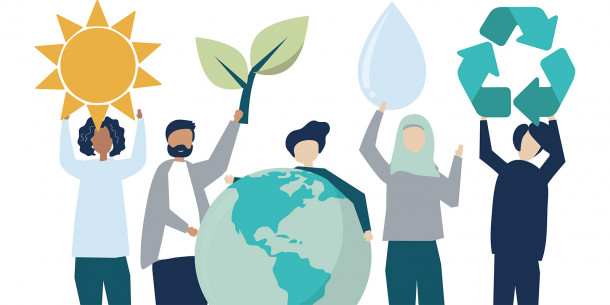By Arthita Banerjee
Climate change is one of the greatest challenges humanity faces, and its impacts are felt around the world. But the effects of climate change are not felt equally by all, and women are often on the frontlines of its impact.
As Mary Robinson, former President of Ireland and UN High Commissioner for Human Rights, stated, “Climate change is a man-made problem, but it is women and children who bear the brunt.” But in the face of melting ice, droughts, and natural disasters, women have emerged as the true guardians of our planet, facing the impacts of climate change with unwavering courage and determination. From grassroots activists to national policymakers, women are bringing a unique perspective and skillset to the table, as well as a deep commitment to building a more just and sustainable future.
In the Arctic, Inuit women have been known to use traditional knowledge to adapt to the melting ice and changing landscape. The Arctic is warming twice as fast as the rest of the world, and this has had a significant impact on the traditional lifestyles of the Inuit people. Inuit women are using their knowledge of the land and sea to find new ways to adapt.1 They are using traditional sewing skills to create clothing that is better suited to the warmer temperatures, and they are developing new hunting techniques to catch different types of animals that are now migrating to the area.
In Africa, women are using sustainable farming techniques to grow crops in the face of drought and extreme weather. According to the United Nations, women produce up to 80% of the food in Africa, but they are often excluded from decision-making processes and lack access to resources like land, credit, and education.2 In 2020, a group of women in rural Senegal launched a community-led reforestation project to restore degraded land and protect against desertification. The project, called “Mujeres por la Tierra” (Women for the Earth), involved planting thousands of trees and shrubs and creating new community gardens. The women also developed a sustainable agriculture program and a beekeeping cooperative to generate income and support local food security.
In January 2021, a group of women farmers in the Indian state of Tamil Nadu successfully used a traditional farming technique called “system of rice intensification” (SRI) to increase crop yields and reduce water usage in the face of drought.3 The farmers, who were trained by a local NGO, were able to produce 1.5 times more rice per acre while using 30% less water than traditional methods.
In the Pacific island nation of Tuvalua, a group of young women presented a petition to the United Nations calling for urgent action on climate change. The women, who are members of the Tuvalu Climate Action Network, have been working to raise awareness about the impacts of sea level rise and ocean acidification on their small island nation. They are also advocating for stronger climate policies and increased support for vulnerable communities.4
Indigenous women in the Ecuadorian Andes have taken up sustainable agricultural practices and landscape management in the páramo ecosystem. The aim of these initiatives is to restore the ecosystem’s health, which has suffered from years of overgrazing and desertification, resulting in vast areas of barren and depleted land. The women-led efforts are also breaking down gender stereotypes and providing opportunities for women to participate in decision-making processes in their communities.
From renewable energy to sustainable agriculture, women-led innovation in the climate space is breaking new ground. Muthoni Masinde, a Kenyan software engineer and entrepreneur has successfully employed technology to tackle climate change and promote sustainable agriculture. Masinde is the founder of AI-powered agri-tech startup, called “The TechFarm,” which helps farmers optimize their crop yields using real-time weather data and predictive analytics.5 Her platform is enabling smallholder farmers to improve their productivity and resilience in the face of climate change, while also reducing the environmental impact of agriculture.
The legacy of women in the climate movement is one of resilience, determination, and visionary leadership. Rachel Carson is often credited with starting the modern environmental movement with the publication of her groundbreaking book “Silent Spring” in 1962.6 The book drew attention to the damaging effects of pesticides and other chemicals on the natural world, and helped to spark a broader public awareness of environmental issues. Since then, women have been at the forefront of the climate movement, from grassroots activists to scientists and policymakers. Women like Wangari Maathai, who founded the Green Belt Movement in Kenya, and Greta Thunberg, inspiring a global youth climate movement, women have become powerful symbols of the urgent need for action to address climate change.


